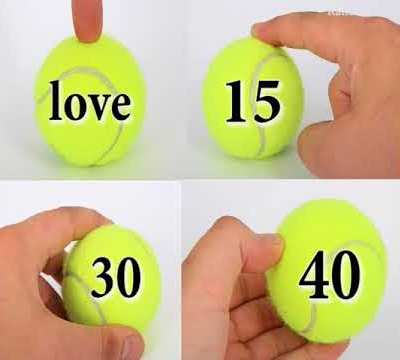
What does tennis mean for most of us? Tennis stars who earn millions of pounds in prize money? Huge sponsorship deals? Jetting around the world to play in major tournaments? Modern tennis has all of this and more. It seems a long way from the earliest form of the game played in the Middle Ages. That is what it is though, deep down – a medieval game with a medieval scoring system.
Tennis has been popular for centuries. Nearly four hundred years ago the city of Paris alone had more than a thousand tennis courts.
In the original scoring system, players had to win four points to win a game and four games to win a set. The points were often recorded on a clock face, with one point for each quarter. So it became common to refer to the first point as fifteen, because it was the first quarter. Thirty became the second point for the same reason. Forty-five was shortened to forty. That marked the third quarter. And the game had been won when the hand reached the fourth quarter at the top of the clock face.
What about ‘love’? Where did that come from? As I am sure you do not need telling, ‘love’ means no points in a game or no games in a set. It is possible that this may have come from the English pronunciation of the French word ‘l’oeuf’, meaning ‘the egg’. Maybe the oval shape of nought reminded people of an egg.
Tennis has another unusual score too. This is ‘deuce’, which probably comes from ‘deux’, the French word for ‘two’. Deuce is used when both players (or doubles pairs) have scored forty, and need to win two points running to take the game.
Picture Credit : Google




